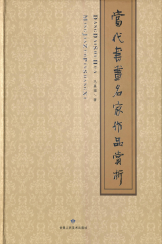
主要责任者: 马真福
责任方式: 著
出版者: 甘肃人民美术出版社
出版地: 兰州
字数: 240 千字
页码: 1-237
开本: 16
中图分类号: J212.05
装帧: 精
语种:中
定价:360.00
出版时间:2014-09
丛书多卷书否:否
书目简介:本册工具书共收录149条词条。
被引频次:1
| 词条 | 当代书画名家作品赏析 |
| 类别 | 中文百科知识 |
| 释义 |  主要责任者: 马真福 责任方式: 著 出版者: 甘肃人民美术出版社 出版地: 兰州 字数: 240 千字 页码: 1-237 开本: 16 中图分类号: J212.05 装帧: 精 语种:中 定价:360.00 出版时间:2014-09 丛书多卷书否:否 书目简介:本册工具书共收录149条词条。 被引频次:1 |
| 随便看 |
开放百科全书收录579518条英语、德语、日语等多语种百科知识,基本涵盖了大多数领域的百科知识,是一部内容自由、开放的电子版国际百科全书。